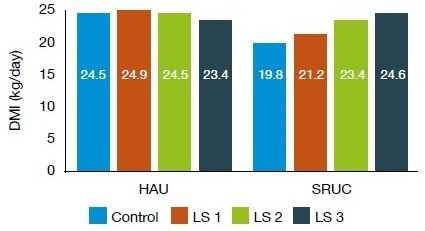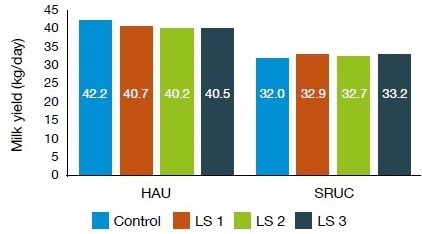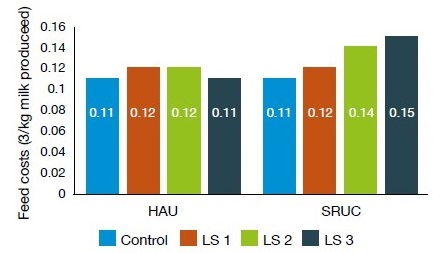- Home
- Knowledge library
- Lucerne as a replacement for grass silage in the diet of the dairy cow
Lucerne as a replacement for grass silage in the diet of the dairy cow

Lucerne as a replacement for grass silage in the diet of the dairy cow
The use of home-grown forages like lucerne silage can help to reduce feed costs and reduce our reliance on imported protein feeds into the UK.
Purpose of our research
We tested the effects of including lucerne silage on animal performance when diets contained either grass or maize silage as the forage source.
Key findings
- At both sites, the need for purchased protein was reduced when lucerne was included in the diet but purchased energy was required at SRUC
- The effect of including lucerne silage in the diet is largely dependent on the quality of the forage itself and the quality of the forage it replaces
- If you are aiming to include lucerne silage in the diet, you should base your decision on the ability of your farm to grow the crop and likely fertiliser savings, rather than improvement in yield or milk quality
What did we do?
- 20 dairy cows at Harper Adams University (HAU) and 16 at Scotland’s Rural College (SRUC) were used
- Cows received various levels of lucerne, grass and maize silage in the diet
- Animal intake and production were monitored
|
| Harper Adams | SRUC | |||
|---|---|---|---|---|---|
|
| Grass | Lucerne | Maize | Grass | Lucerne |
| Control |
0.40 |
0.00 |
0.60 |
1.00 |
0.00 |
|
Lucerne 1 |
0.20 |
0.20 |
0.60 |
0.75 |
0.25 |
|
Lucerne 2 |
0.00 |
0.40 |
0.60 |
0.50 |
0.50 |
|
Lucerne 3 |
0.00 |
0.60 |
0.40 |
0.25 |
0.75 |
Results
- Including lucerne silage at 0.50 of forage DM or more, increased dry matter intake (DMI) by 3.5 kg/day at SRUC
- Lucerne silage didn’t affect DMI at HAU except at the highest level of inclusion, where it was reduced by 1.2 kg/day

- Milk production was not affected by treatment at either site
- Milk quality yields were also not affected by diet

- Feed costs per kg milk produced increased as lucerne silage inclusion increased at SRUC – this was due to the higher DMI as lucerne silage replaced grass silage with no improvement in milk production

Topics:
Sectors:
Tags:

